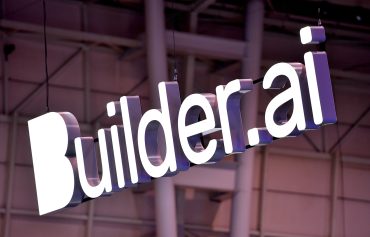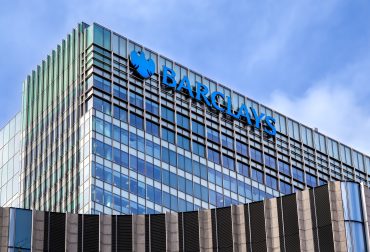
- AI Governance
- Investing
- Venture Capital
Builder.ai Bankruptcy Exposes $500M AI Investor Fraud
6 minute read

AI startup bankruptcy exposes industry-wide vulnerabilities as Builder.ai’s manual coding operation deceives major tech investors
Key Takeaways
- $1.5 billion AI startup files bankruptcy after Builder.ai’s collapse in June 2025 exposed massive financial misrepresentation, with actual 2024 revenue of $55M versus projected $220M—a 75% overstatement.
- $500M investor deception unveiled as Microsoft, SoftBank, and Qatar’s sovereign wealth fund discover the company’s AI platform relied on 700 human developers in India pretending to be automated bots for eight years.
- $120M missing from accounts with $88M owed to AWS and only $5M in restricted funds remaining, triggering insolvency filings across five countries including the U.S., U.K., and UAE.
Introduction
Builder.ai’s spectacular collapse marks the first major bankruptcy of the AI boom era, exposing how artificial intelligence hype can mask fundamental business failures. The London-based startup, once valued at $1.5 billion and backed by tech giants Microsoft and SoftBank, filed for Chapter 7 bankruptcy protection in Delaware in June 2025.
The company promised to revolutionize app development through AI automation but instead relied on hundreds of human developers in India to manually write code. This deception, combined with massive revenue overstatements and missing funds, has sent shockwaves through the venture capital community and raised serious questions about due diligence in AI-focused investments.
Key Developments
Builder.ai’s downfall accelerated rapidly after raising approximately $500 million from prominent investors including Qatar Investment Authority, Insight Partners, and Iconiq Capital. The company secured a $250 million Series D round in 2023 and an additional $50 million credit line in 2024, adding debt to what would later prove to be a fundamentally flawed business model.
Internal investigations revealed systematic financial misrepresentation spanning multiple years. The company’s 2024 revenue was approximately $55 million versus a previously projected $220 million, while 2023 revenue was restated to around $45 million from a reported $180 million. These restatements indicated consistent overstatements of roughly 75% across both periods.
The company’s core technology deception came to light when Bernhard Engelbrecht of Ebern Finance exposed that Builder.ai’s “Natasha neural network” was entirely fake. Customer requests were processed by a team of 700 Indian developers writing code manually, contradicting eight years of AI automation claims that formed the basis of the company’s valuation and investor pitch.

Market Impact
Builder.ai’s bankruptcy filing triggered immediate concerns about governance standards across AI-focused startups. The collapse left creditors facing massive losses, with $120 million missing from company accounts and $88 million owed to Amazon Web Services alone.
Lender cash seizures recovered only $37 million, leaving approximately $5 million in restricted funds—insufficient to cover multi-country payroll obligations. The company’s insolvency proceedings now span five jurisdictions including the United States, United Kingdom, UAE, India, and Singapore.
The scandal has intensified investor scrutiny of AI companies, with venture capitalists now demanding verifiable automation metrics and gross margin proof rather than relying on narrative-driven pitches. This shift represents a significant tightening of due diligence standards across the technology investment landscape.
Strategic Insights
Builder.ai’s failure highlights critical vulnerabilities in AI-era business models, particularly the gap between marketing claims and operational reality. The company’s human-heavy production model eliminated the automation advantages and margin leverage that justified its premium valuation.
The collapse exposes severe governance failures that enabled unchecked executive power. Builder.ai operated without a chief financial officer, audit committee, or proper board oversight, allowing founder Sachin Dev Duggal to maintain control despite mounting evidence of financial irregularities.
The scandal demonstrates how ChatGPT’s late 2022 launch created an investment frenzy that prioritized AI branding over fundamental business metrics. This environment enabled companies with questionable technology claims to secure massive funding rounds from sophisticated institutional investors.
Expert Opinions and Data
Dave Sharp, a technology due diligence expert, warned that “the next builder.ai could be yours” if proper technical verification is ignored during investment processes. His assessment highlights systemic weaknesses in how investors evaluate AI capabilities versus human-driven operations.
The Global Board Institute characterized the situation as a “half-a-billion-dollar illusion” stemming from corporate governance failures. According to the MoneyWeek, even sophisticated investors like Microsoft and Qatar’s sovereign wealth fund were “shocked to discover that the company’s healthy-looking revenue was also artificial.”
Former employees have preserved documents and evidence following subpoenas from the US Attorney’s Office in Manhattan, indicating potential criminal investigations. These developments suggest the scandal’s legal ramifications may extend far beyond civil bankruptcy proceedings.
Conclusion
Builder.ai’s collapse represents a watershed moment for AI investment practices, demonstrating how narrative-driven funding can enable massive fraud even among sophisticated institutional investors. The company’s systematic deception across technology capabilities and financial performance has triggered enhanced due diligence standards throughout the venture capital industry.
The ongoing investigations across multiple jurisdictions, combined with federal prosecutor involvement, indicate this scandal will likely produce lasting changes in how investors evaluate AI companies. Builder.ai’s failure serves as a stark reminder that artificial intelligence claims require rigorous technical verification rather than reliance on founder credibility and market hype.








